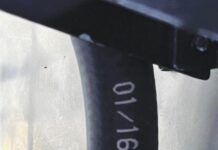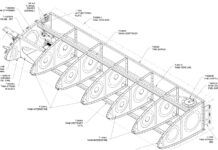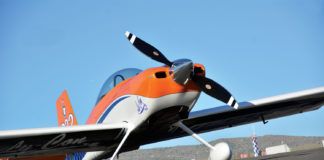Late on a Thursday afternoon last November, I received an urgent email from EAA headquarters. Surprises are sometimes fun, but this one wasn’t. It was about a new law in Oregon, my recently adopted home state. Oregon House Bill 2210 mandates adding 10% ethanol to all auto fuel, and the program was scheduled to begin in the northwest corner of the state on January 15, 2008. Rolling implementation will soon affect the entire state. Alarm bells went off in my head as I prepared to respond to a law that will affect thousands of Oregon pilots including owners of most of the factory-built Light Sport Aircraft (SLSAs). An implementation meeting was set for the next morning.
The email had come to me as the newsletter editor of my local EAA chapter. But my response at a meeting at the Oregon Department of Agriculture at 9 a.m. the next day was as a board member of the Oregon Pilots Association (OPA). Less than a week before the email, I had stepped down after a two-year term as president of OPA, a nonprofit group dating from the 1930s that promotes general aviation and has about 1300 members. I will continue on the board for two years, and I live near Salem, the state capital, where the Friday meeting was held.
The agriculture department did not initiate the bill but has the responsibility for implementing it. EAAs message included a contact in the ag department who is well versed on ethanol/aviation issues and welcomed my participation. I also called the Oregon Department of Aviation (ODA) and was amazed to find that this state agency had apparently been left out of the loop during the ethanol/auto fuel legislative process.
Whats Ethanol?
Ethanol is alcohol made from grain, primarily from corn in this country. Used as an oxidizing agent in gasoline, it produces cleaner emissions than petroleum and has replaced MTBE, an oxidizer that is toxic and gets into groundwater. Ethanol is politically controversial because corn normally used in the food chain (cattle feed, corn syrup) is being diverted to use in gasoline, raising food prices worldwide. The U.S. exports a lot of corn.
Whats the Problem?
For years we have heard that ethanol in fuel is problematic. On October 27, 2006, the FAA issued Special Airworthiness Information Bulletin CE-07-06, which summarizes the reasons that auto fuel containing alcohol may not be used in conjunction with the FAA-approved supplemental type certificates (STCs) that are available for many standard aircraft. Alcohol affects the volatility of automobile gasoline (mogas) and may cause vapor lock.
My personal experience with this was not aviation-related, fortunately. Driving my 74 Volvo southwest on a hot summer day after EAAs Oshkosh convention in 1983, I lost power three times and had to wait until the engine cooled to continue. At the third stop, a Missouri highway patrolman pulled over. He asked where I had refueled. Iowa was the answer. “You have vapor lock from gasohol,” he said. At the next opportunity, I drained the tank, bought straight gasoline, and had no further problem.
Alcohol is corrosive and may be incompatible with rubber seals and other materials used in an aircraft fuel system, causing deterioration and malfunction. (Example: The seals in a fuel selector may swell and prevent turning the valve.) Natural rubbers are used in some O-rings and seals in airplanes, and they swell in the presence of alcohol. Newer synthetic rubbers are not affected.
Alcohol in auto fuel may cause phase separation as the aircraft climbs. Alcohol absorbs water, which may separate from the fuel and cannot be handled by
the sediment bowl. (Unlike modern
pressurized car and truck systems, aircraft fuel systems are vented to the atmosphere and will ingest water vapor.) Ethanol contains approximately 73% of the energy content of gasoline. The more ethanol in the fuel, the less range is available from the same volume of fuel.
Why Use Mogas?
Pilots opt to use mogas in their aircraft for one or both of two primary reasons: It saves money, and it avoids problems associated with using 100LL avgas in older, low-compression engines. Those low-power aircraft engines were designed for 80/87 octane avgas, which refiners stopped making decades ago. The LL in 100LL stands for low lead, but it can contain about four times as much as 80/87 had. Using 100LL in low-compression engines often results in lead fouling of the spark plugs.
In my case, the 1949 Lycoming O-235-C1 in my Spacewalker II had lead fouling despite best efforts to lean aggressively, including taxi, where I keep the rpm up to 1000. The decision to haul and pour mogas was made only after checking that there is an auto fuel STC for this engine, and after getting confirmation from my mogas supplier that there was no ethanol present. I also bought the $15 EAA alcohol test kit and used it a few times to confirm alcohol-free mogas. All of that fixed the fouling problem.
A third reason: Mogas, being lead free, is better environmentally.
Consequences
Among those who will be affected are owners who have bought the EAA or Petersen Aviation STCs to use auto fuel in their FAA-certified aircraft. The STC approvals have followed thousands of hours of flight testing with mogas in many engines and airframes and in worst-case conditions. In Oregon, EAA says, 1053 aircraft have these STCs, which prohibit using fuel that contains any alcohol. Experimental aircraft whose pilots have chosen to use mogas do not require such STCs nor are they available.
More than 75% of the SLSAs, mostly from Europe but also some built in the U.S., are powered by the 100-horsepower Rotax 912S, and Rotax recommends unleaded premium (91 octane) fuel with 5% or less ethanol.
The Ag Department Meeting
Why didn’t we know about this legislation in time to have proposed a solution? It appears that neither the drafters nor the sponsors considered the effect on aviation or others, including commercial and recreational marine interests and antique car fans.
About 25 people attended the meeting. All, including reps from oil companies and the states legal department, were there in some official capacity. Aviation was the first agenda item. I shared the information above, and our local EAA chapter president and two ODA representatives also commented.
A person from the state legal department said that the bill does not preclude the use of alcohol-free fuel in aircraft. But I noted that the remaining hurdle is supply. Everyone agreed that no gasoline dealer-either at a filling station or an FBO-is likely to install a pump for ethanol-free gasoline for aviation. Also, no refinery will voluntarily make ethanol-free fuel for this small fraction of a tiny market, especially when it carries aviation liability.
The only practical solution, I said, was for new legislation that would require the supply chain (refiners, distributors and retailers) to carry one grade of gasoline-presumably premium grade-without ethanol. Because premium gasoline sales are small compared with regular gas, environmental objectives should be met, and those who need ethanol-free fuel will pay premium fuel prices to get it. This would provide fuel not only for some aircraft but also antique cars, older boats, lawn equipment and other devices that are not designed for ethanol-blend fuel.
At this point, Montana has legislated the availability of ethanol-free mogas at refineries, but retailers are not forced to carry any. Whether customers needing pure gasoline will be able to get it remains to be seen.
Oregons Prospects
As I write this, another ag department meeting is scheduled, and I will attend. But at a meeting with the ODA director a few days ago, he posited that the legislature might balk at requiring all premium auto gas to be ethanol-free. Thats because exempting some vehicles-in particular fuel-inefficent pickups and SUVs that need premium fuel-from this environmental issue may be politically unpalatable. Also, such new legislation would emphasize the unintended consequences and lack of thorough staff work in the current legislation. Therefore its probably too late for Oregon.
Other Solutions?
For Oregon holders of the mogas STCs, the only safe and legal solution appears to be a return to 100LL. For those with low-compression engines and lead fouling, Alcor TCP lead scavenger is the answer, except that you cant get any. New government regulations have stopped the delivery of TCP, apparently even by private shipping companies, and Alcor TCP is the only government-approved (different branch of the government) lead scavenger for certified engines.
Those of us with low-compression engines in Experimental-category aircraft are in somewhat better shape. We can revert to 100LL and solve lead problems with a different additive. Decalin is another brand of lead scavenger, and Aircraft Spruce & Specialty is shipping a quart my direction. The price is $27.40 per quart plus about $10 for shipping. A quart makes up to 640 gallons of treated 100LL.
Those dealing with Rotax 912S fuel issues have several choices. One would be to observe the alcohol prohibition and burn 100LL. Phil Lockwood, whose Lockwood Aviation Supply company sells and services Rotaxes, says the Rotax 912 can burn avgas safely, but operators should change oil twice as often (at 25 instead of 50 hours) and inspect for lead problems. The other choice would be to ignore the Rotax 912 5% ethanol limit after checking with the airframe or kit manufacturer about fuel-system parts that could be alcohol-sensitive. Lockwood said he knows some Rotax 912 pilots who regularly use E-10 (10% ethanol) mogas. So far, problems have not been reported, but you might leave yourself open to a warranty violation.
Action to Take
If the continued availability of alcohol-free mogas is important to you, contact your state aviation department about potential legislation, and ask if there is a contingency plan to assure a regular supply of no-alcohol mogas. Having learned a lot during this Oregon fiasco, I also recommend a backup plan that includes a computer search of your states legislative agenda every few months for words and terms such as ethanol and E-10. If you do that on Minnesotas web site, you will see that the state will double its alcohol content in auto fuel to E-20 (20%) in 2013. Well follow this story and provide brief updates as warranted.
Dave Martin served as editor of this magazine for 17 years and began aviation journalism
evaluating ultralights in the early 80s. A former CFI (airplanes, gliders, instruments), hes
flown more than 160 aircraft types plus 60 ultralights (including a single-seat, no-basket hot air balloon). Now living at a residential airpark in Oregon, he flies his Spacewalker II homebuilt as a Sport Pilot.













